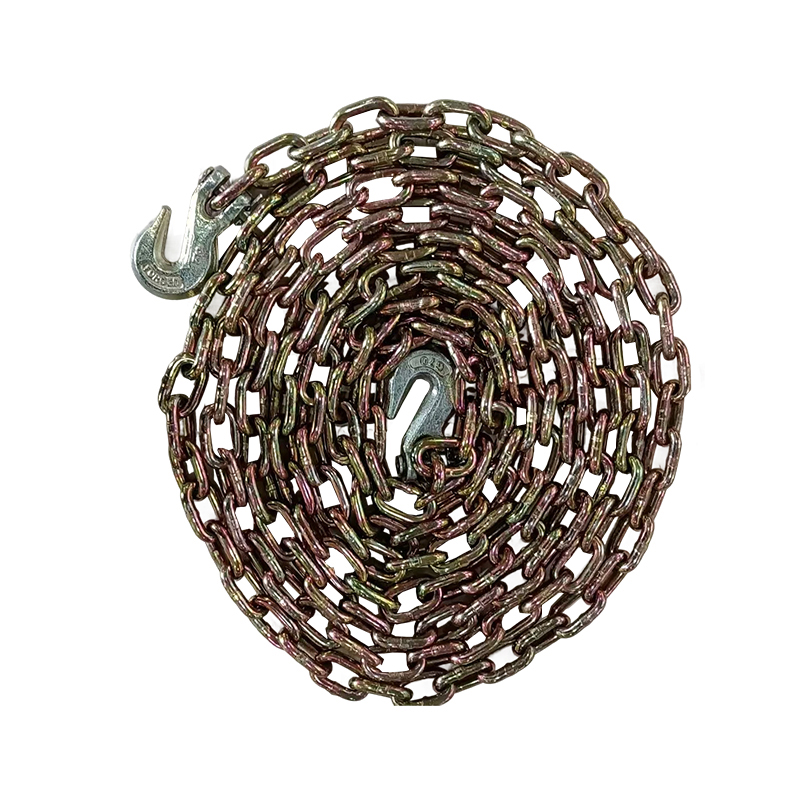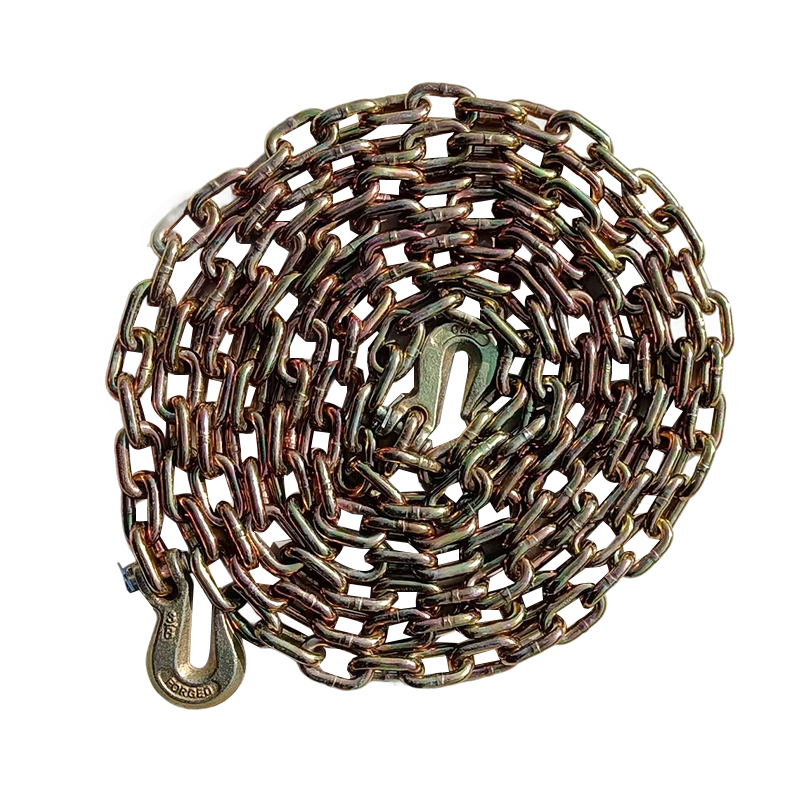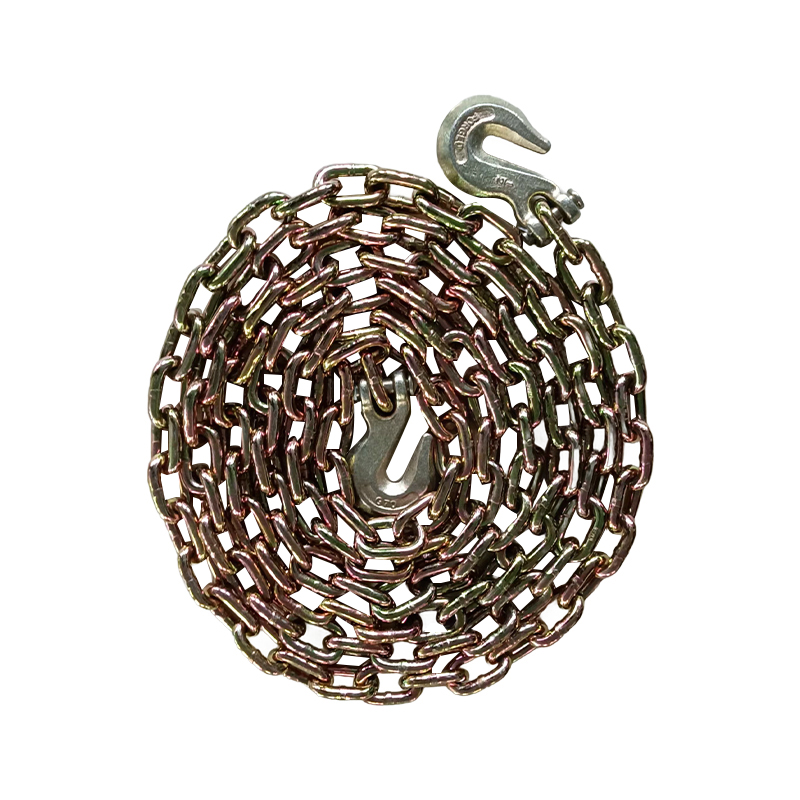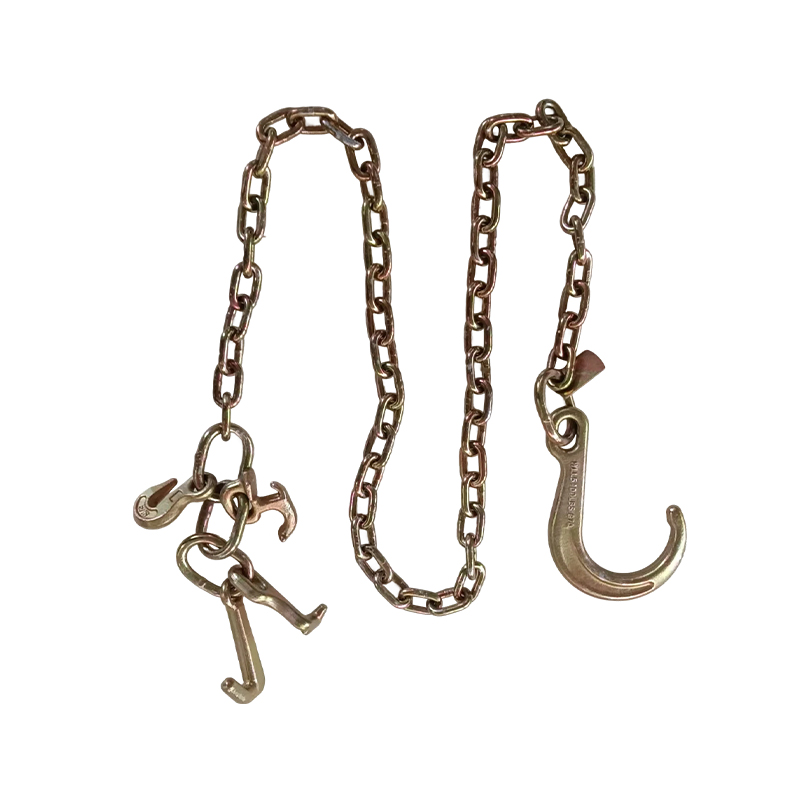How does the link structure design of a bundling chain affect its tensile strength?
Release Time : 2025-05-08
Bundling chain undertakes important load-bearing and fixing tasks in many fields, and its tensile strength is one of the key performance indicators. As an important factor affecting the tensile strength of bundling chain, the chain link structure design has always been the focus of engineering design and research. Reasonable chain link structure design can maximize its tensile strength while ensuring the flexibility of the chain, ensuring the safe and reliable operation of the bundling chain under various working conditions.
The shape of the chain link has a direct impact on the tensile strength of the bundling chain. Common chain link shapes include elliptical, circular and rectangular. Due to its shape characteristics, the elliptical chain link can distribute stress more evenly when subjected to force and reduce stress concentration. In contrast, the circular chain link has a more compact structure and a relatively uniform surface stress distribution, which can better exert the strength properties of the material when subjected to tension. Although rectangular chain links are easy to manufacture and connect in some cases, they are prone to stress concentration at their edges and corners. Under the same material and size, the tensile strength is often not as good as that of elliptical and circular chain links.
The size of the chain link is also an important factor affecting the tensile strength. Generally speaking, the larger the length, width and thickness of the chain link, the higher the tensile strength of the bundling chain. This is because larger chain links can accommodate more materials, thus having a larger load-bearing area and deformation resistance when subjected to tension. For example, increasing the thickness of the chain link can effectively improve its bending strength, reduce the possibility of bending and deformation of the chain link under tension, and thus improve the tensile strength of the entire bundling chain. However, the increase in the size of the chain link will also lead to an increase in weight and cost, so it is necessary to make a reasonable trade-off according to the actual application requirements during design.
The connection method between the chain links is also crucial to the tensile strength of the bundling chain. Common connection methods include welding, riveting and pin connection. Welding connection can form a solid whole between the chain links with high connection strength, but thermal stress and structural changes may occur during the welding process, affecting the performance of the material. Riveted connection fixes the chain links together through rivets, which has good reliability and seismic resistance, but the stress concentration problem at the riveted joint needs to be paid attention to. The pin connection method is relatively flexible and easy to install and disassemble, but the matching accuracy between the pin and the chain link has a great influence on the connection strength. If the matching gap is too large, it is easy to loosen and wear under the action of tension, reducing the tensile strength of the bundling chain.
The surface quality of the chain link also has an important influence on its tensile strength. Chain links with smooth surfaces and no defects can reduce the possibility of stress concentration and improve the strength utilization rate of materials. On the contrary, scratches, cracks, pores and other defects on the surface of the chain link will become a source of stress concentration, which is easy to cause crack propagation under the action of tension, resulting in premature fracture of the chain link and reducing the tensile strength of the bundling chain. Therefore, in the manufacturing process of the chain link, it is necessary to strictly control the surface quality, adopt advanced processing technology and detection methods to ensure the integrity and finish of the chain link surface.
The material properties and structural design of the chain link are interrelated and affect each other. Different materials have different strength, toughness and fatigue properties, and it is necessary to select the appropriate material according to the structural characteristics of the chain link. For example, for a bundling chain that withstands high tensile forces, high-strength alloy steel materials can be selected, and by optimizing the chain link structure design, such as adopting a reasonable shape, size and connection method, the performance advantages of the material can be fully utilized to improve the tensile strength of the bundling chain. At the same time, the heat treatment process of the material will also affect the organizational structure and performance of the chain link, and work together with the chain link structure design to jointly determine the tensile strength of the bundling chain.
The chain link structure design of the bundling chain affects its tensile strength through multiple aspects such as chain link shape, size, connection method, surface quality, and synergy with the material. When designing a bundling chain, it is necessary to comprehensively consider these factors, optimize the chain link structure design according to the specific use environment and requirements, and select appropriate materials and manufacturing processes to improve the tensile strength of the bundling chain and ensure its safety and reliability in practical applications.







